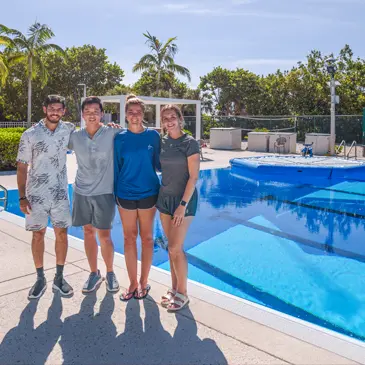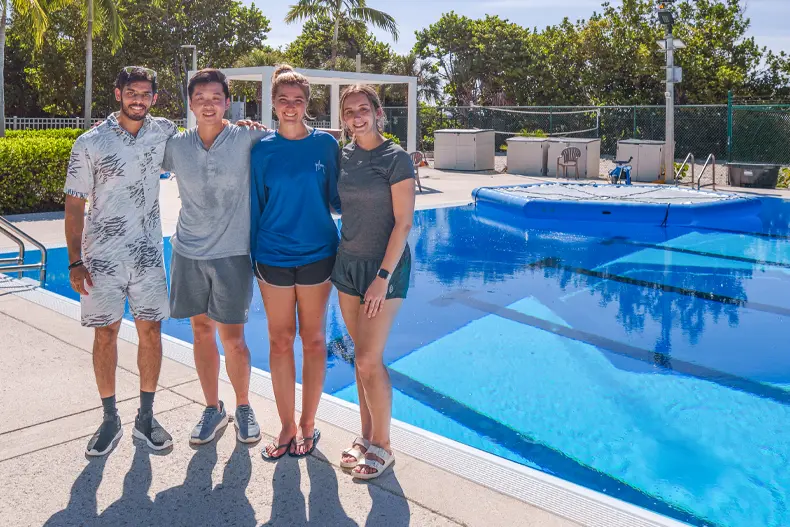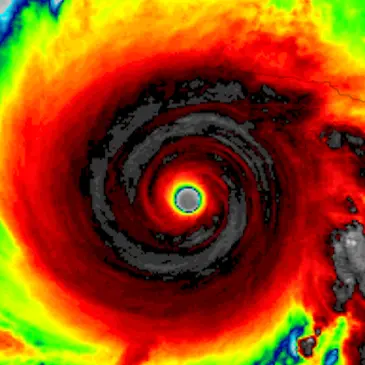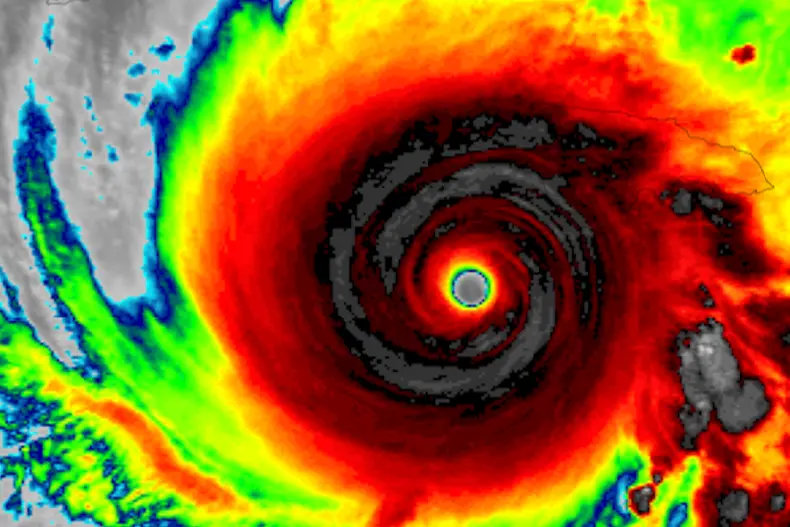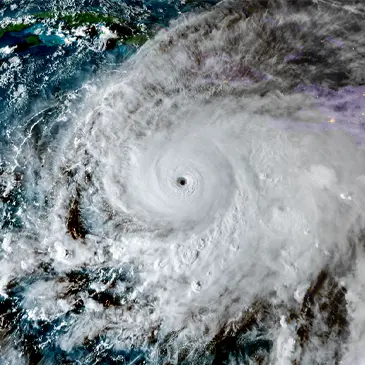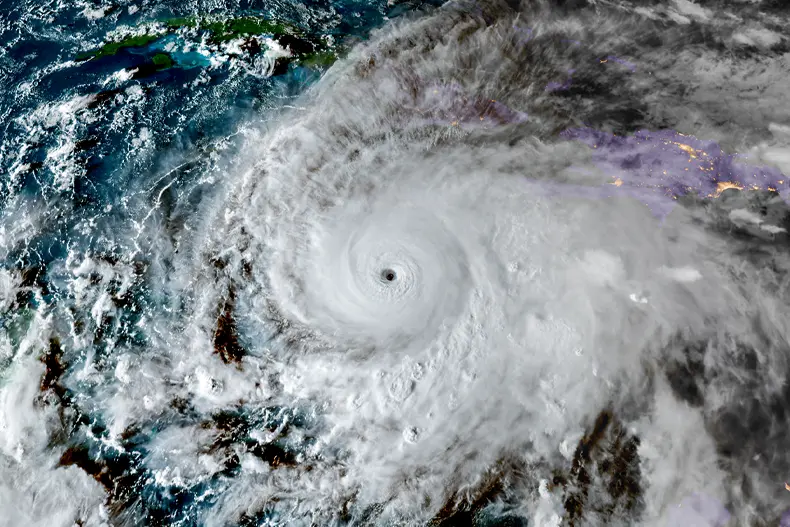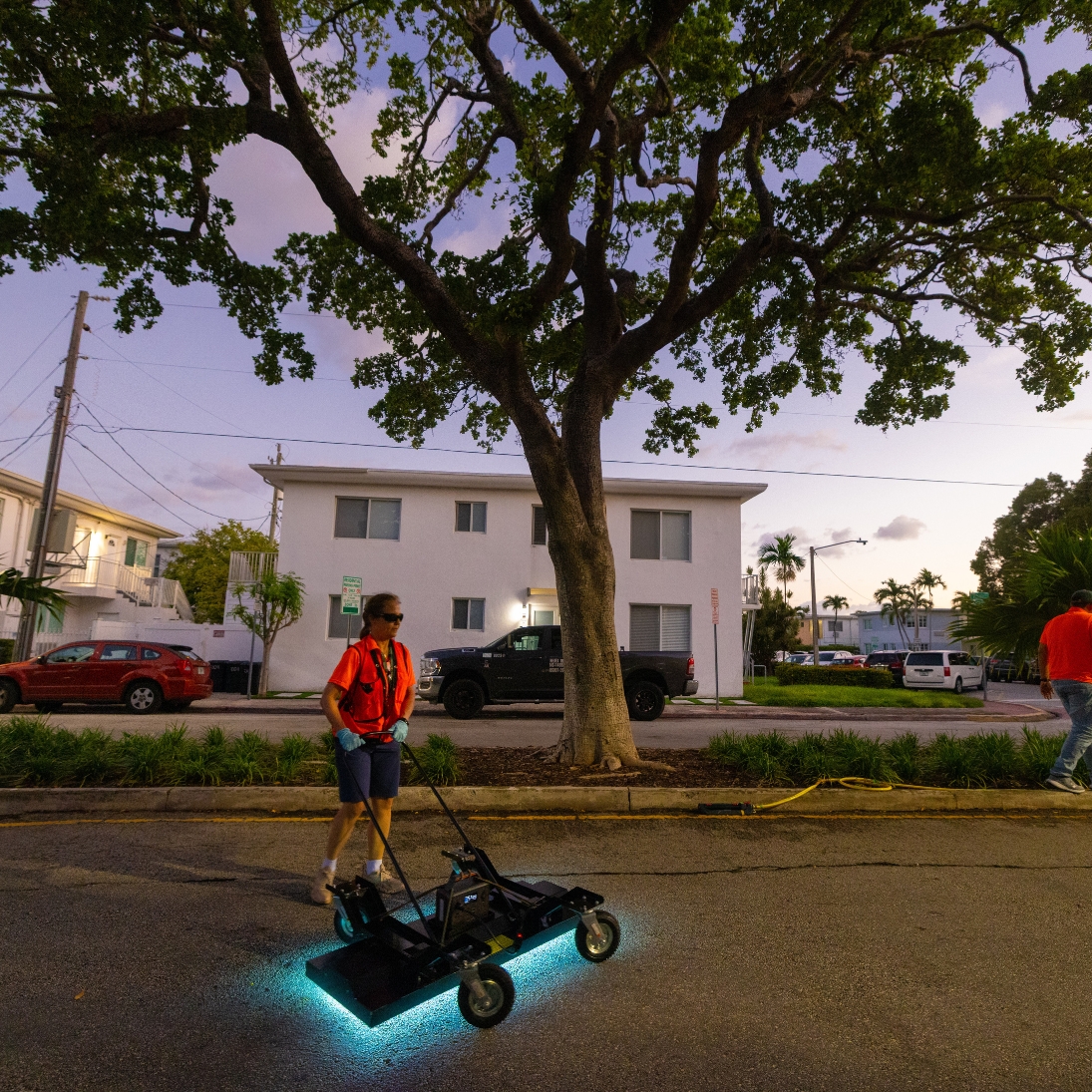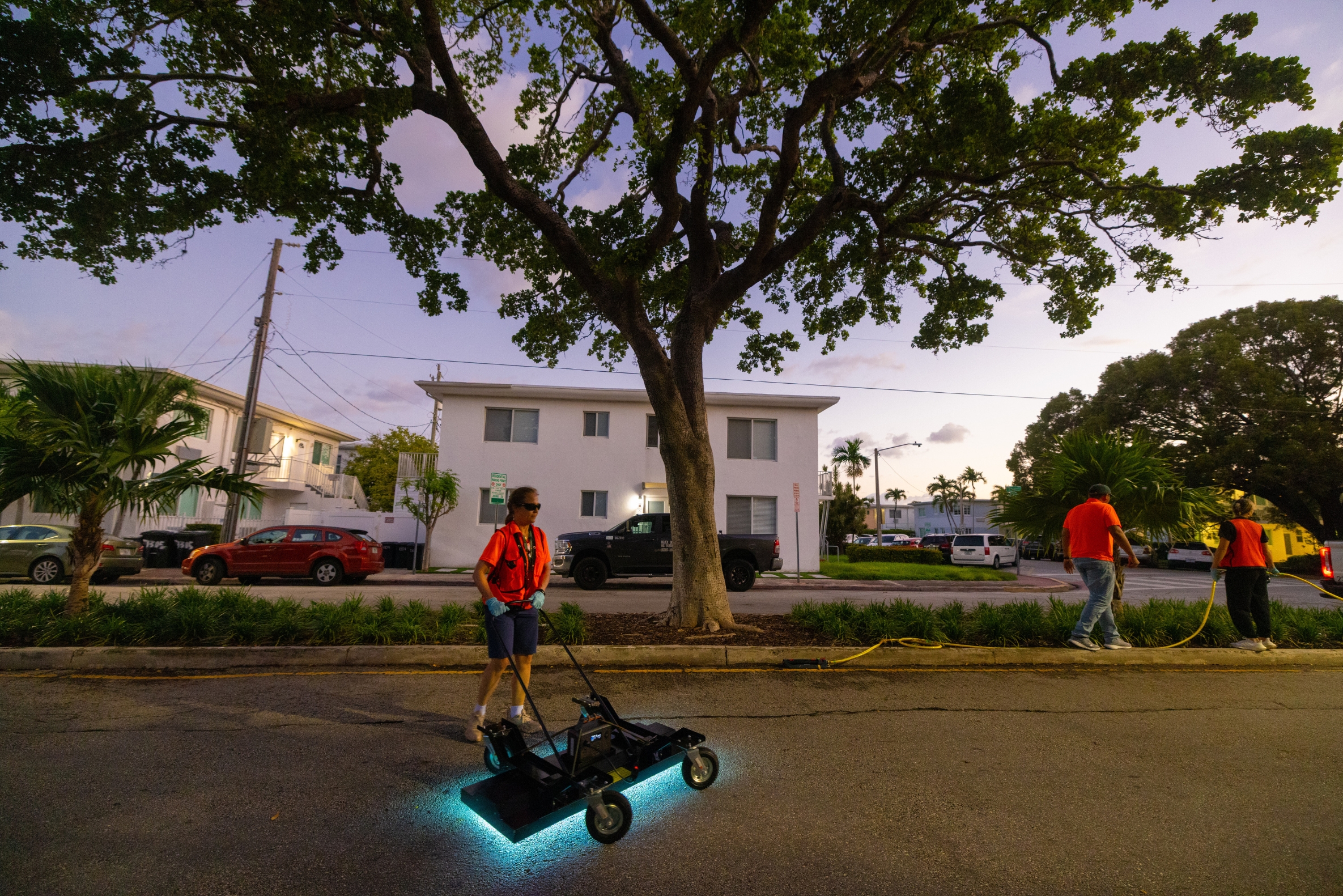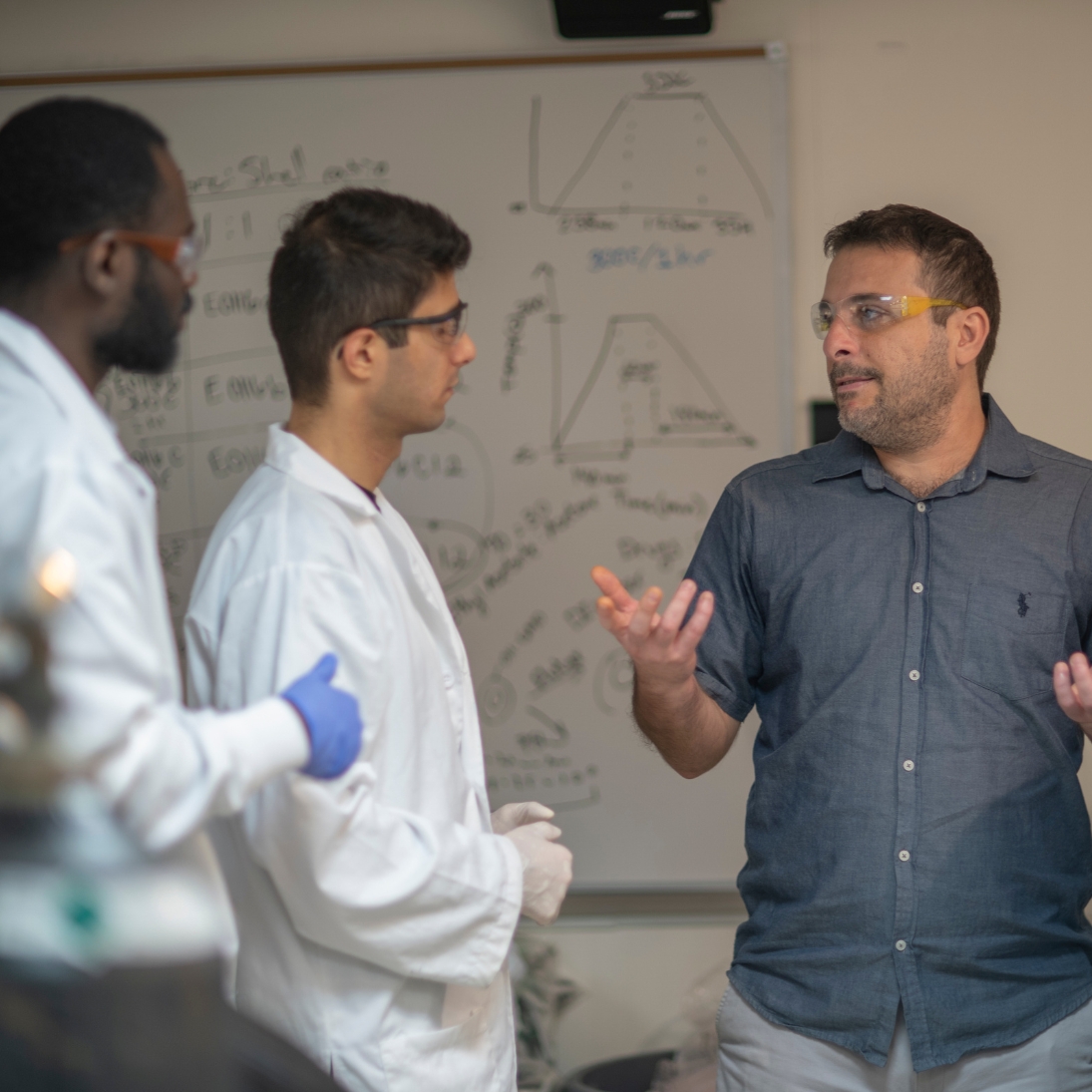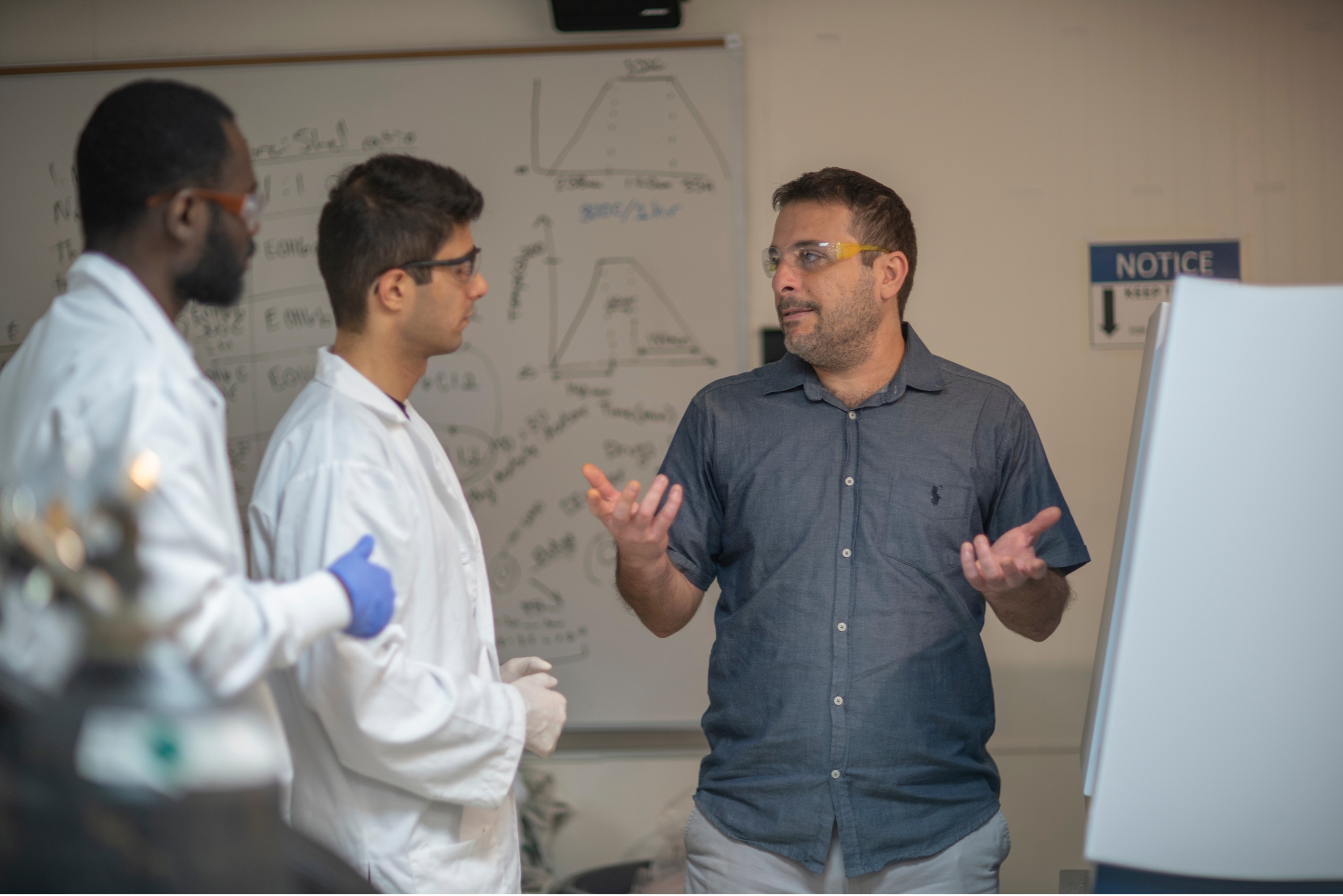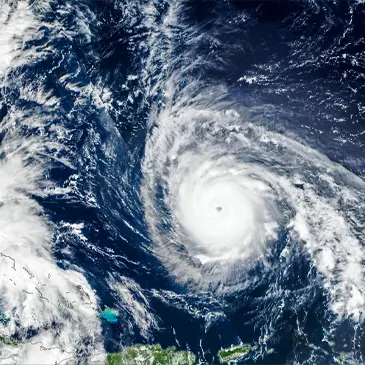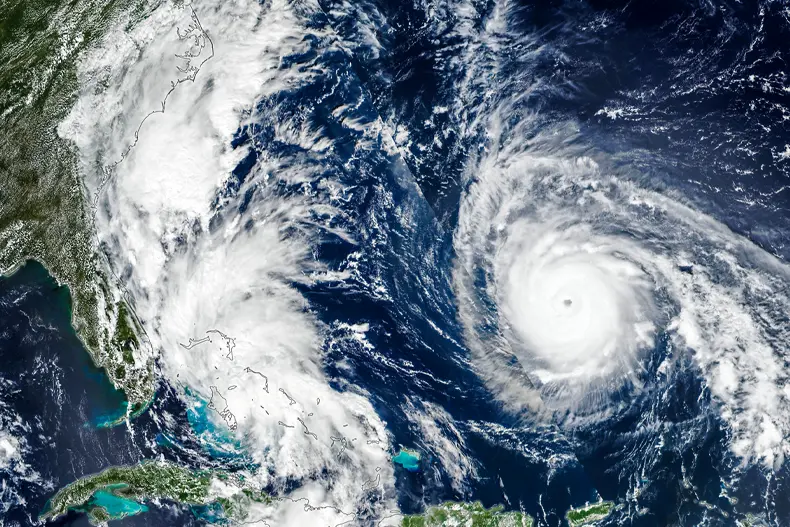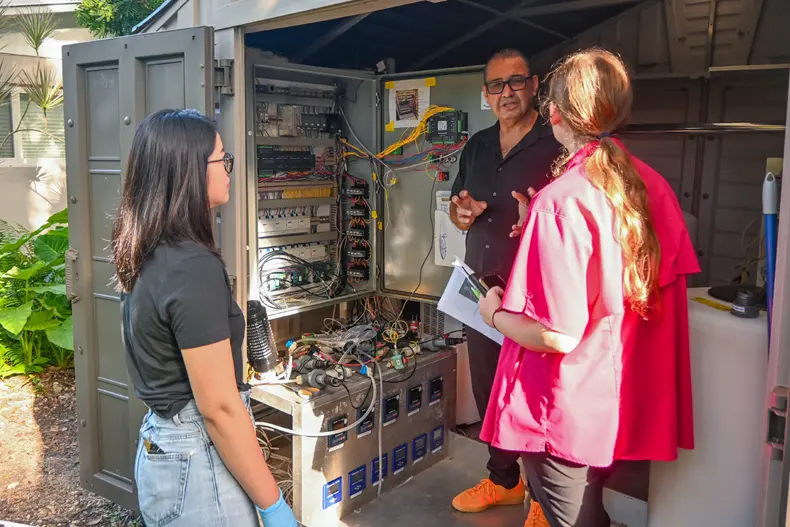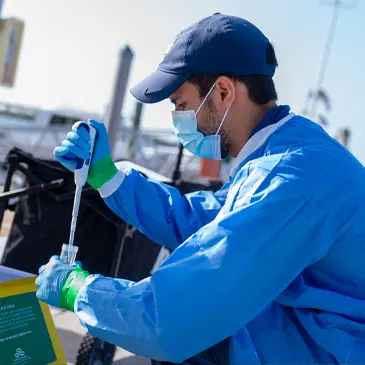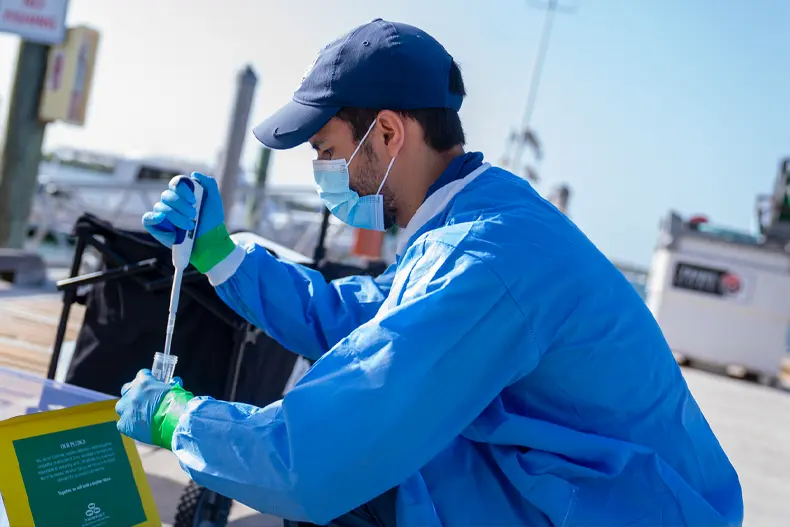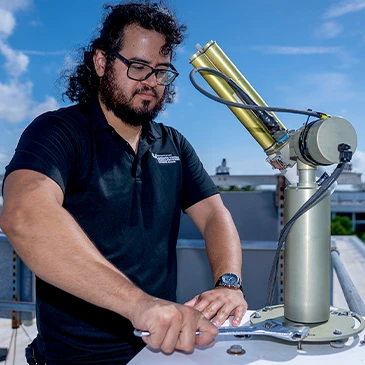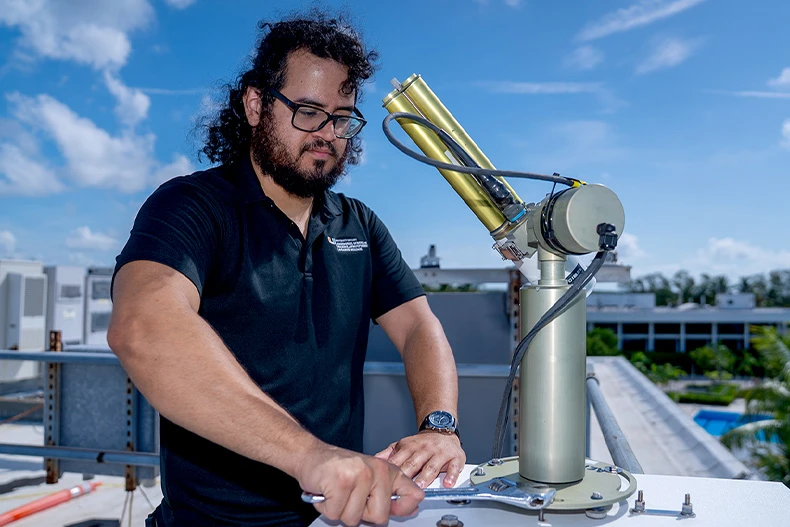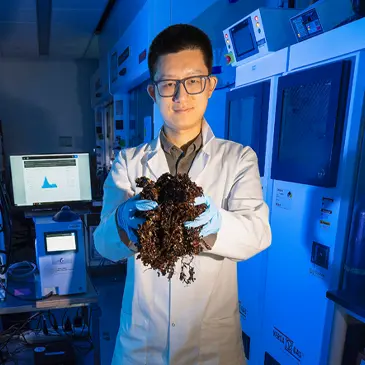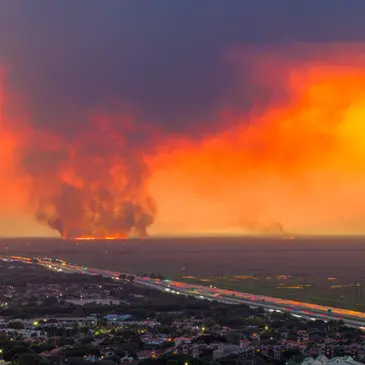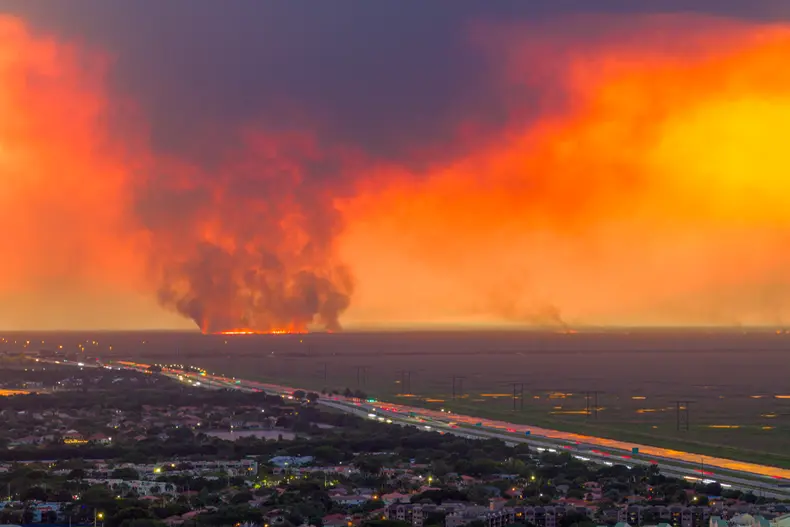Topic: Environment
Tackling coral health from a new angle
A team of University of Miami students devised a removable engineering solution that could protect coral reefs from harmful ultraviolet rays in the hottest months of the year.
How Hurricane Melissa exploded into a monster
The Category 5 storm, which left a trail of destruction across the Caribbean, stunned forecasters and meteorologists, achieving extreme rapid intensification as well as a never-before-recorded wind speed near the ocean surface. University of Miami tropical cyclone experts explain how it happened.
Flying into the heart of Melissa
Tropical cyclone scientist Jun Zhang has deployed drones into the potentially catastrophic Hurricane Melissa, aiding forecasters and amassing data that will help in future storm models.
Shining a new light on water pollution
A collaborative study between the University of Miami College of Engineering and City of Miami Beach explores how ultraviolet light could help make local waters cleaner.
Transforming research and education for a resilient coastal future
A major $3 million National Science Foundation grant will prepare students to address coastal infrastructure resilience challenges
A waltz over water, but no landfall dance
With a rare meteorological phenomenon and the absence of a U.S. landfalling cyclone, the 2025 Atlantic hurricane season has so far proved atypical. But that could change, University of Miami experts say.
Making septic systems cleaner for the environment
A new wastewater treatment system developed by University of Miami researchers harvests and neutralizes harmful nutrients before they leach from septic systems compromised by extreme flooding events.
On the trail of DNA in Saharan dust
Scientists at the University of Miami search for genetic clues in the airborne particles carried thousands of miles across the Atlantic and study their effect on the toxicity of microorganisms in the atmosphere.
How’s the air up there?
Part of a NASA global network of remote-sensing instruments, a newly upgraded device at the University of Miami measures aerosols in the atmosphere to assist research on both local and large-scale weather patterns.
How’s the air up there?
Part of a NASA global network of remote-sensing instruments, a newly upgraded device at the University of Miami measures aerosols in the atmosphere to assist research on both local and large-scale weather patterns.
From flatscreens to bioimaging: Putting sargassum seaweed to good use
Viewing sargassum seaweed as a resource rather than a waste, a University of Miami doctoral student is experimenting with the macroalgae to produce fluorescent carbon dots, which show tremendous potential in a multitude of fields.
How the massive Everglades fire affected air quality over South Florida
Scientists at the University of Miami are poring over data collected from smoke generated by the recent fires, measuring concentrations of pollutants as part of a research effort that could help improve public health warnings.
